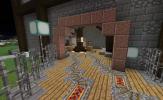- [MC 1.12] Server Railroad Guidelines
- 04 Jul 2017 12:55:31 pm
- Last edited by KermMartian on 03 Feb 2018 11:17:21 am; edited 3 times in total
Since I started playing Minecraft, server-wide transportation has been one of my pet projects. The power of minecart railroads particularly piqued my interest, given my well-documented love of trains.
Current and Planned Server Rails
Legend: Current / Planned / Condemned
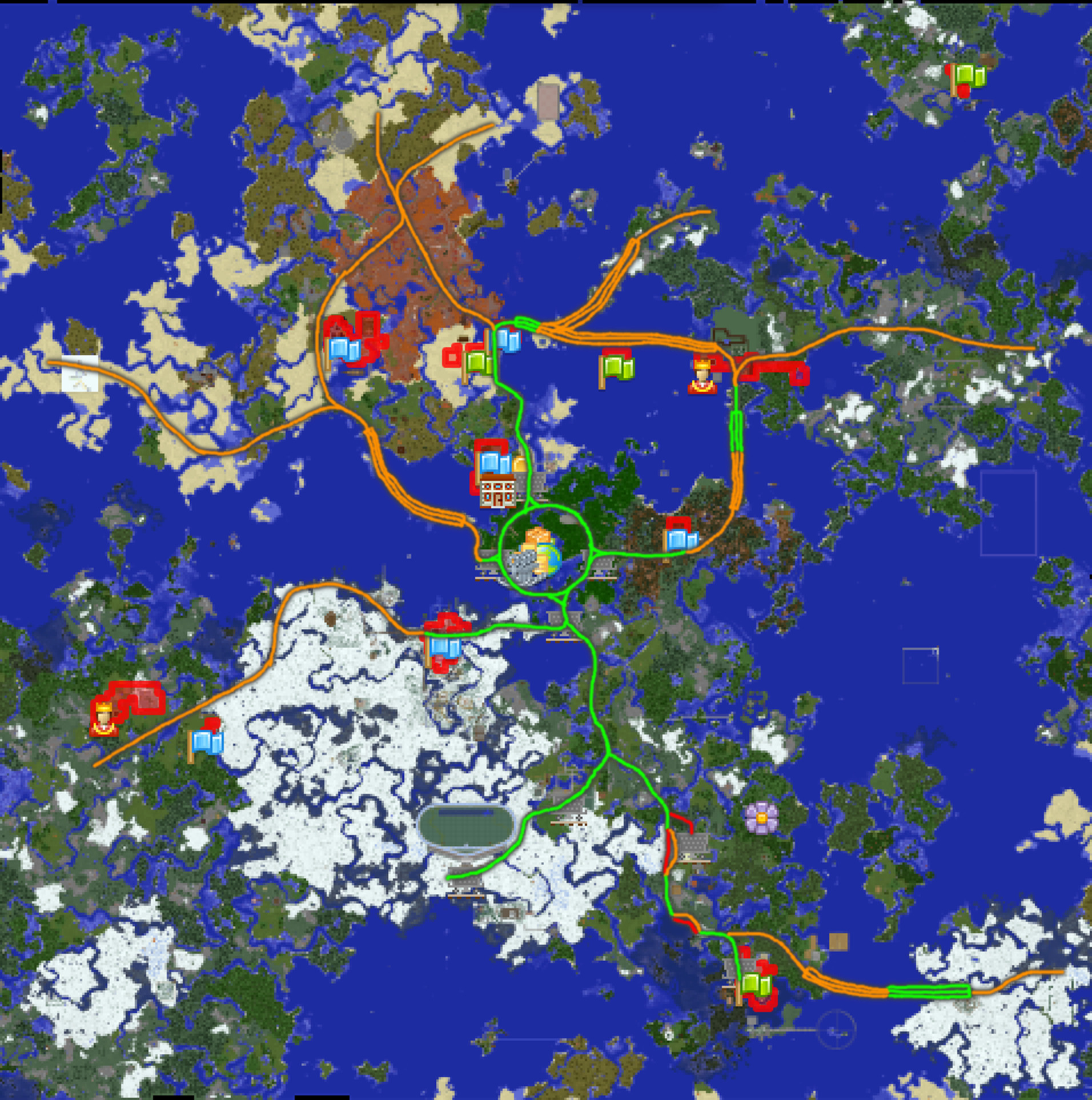
Guidelines
Designing Routes
Track
Stations
Grade Crossings
What Not To Do
Feel free to post below if you have any questions, and happy building!
Current and Planned Server Rails
Legend: Current / Planned / Condemned

Guidelines
- The Cemetech MC server railroad is meant to serve as many players as possible, and cover the server as much as the players want. It's a public railroad, not a private railroad.
- All tracks must be freely traversible by any player (ideally including non-whitelisted visitors): you can't have a section of the rail that you need to be a member of a town to traverse.
- No stations can be private. In general, stations that are near a group of towns are better than a station that serves a single town, and a station that serves a single town but is outside that town's boundaries is better than a station that serves a single town and is inside that town's boundaries. A station that serves a single town, is inside its boundaries, and that you can only get out to wilderness from via town-locked doors, is right out.
Designing Routes
- When you're designing a route, think like a real world railroad engineer (not the kind with the striped hat). Therefore, smooth, gradual curves and gentle inclines are necessary, for example, otherwise trains won't be able to easily traverse those tracks.
- Aesthetically pleasing routes, both from the perspective of bystanders and of railroad passengers, are preferred.
- Imagine that you want to minimize the cost of creating your route: for example, minimize the number of bridges you need and the amount of tunneling you need to do. If you can slightly change a route to reduce the cost, that's preferred.
- Therefore, ocean-wide bridges aren't allowed, but a tunnel crossing that crosses at the narrowest point of the ocean, is reasonable, for example.
-
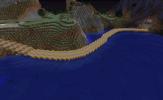
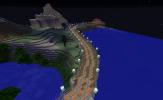
Track
- Track on the Cemetech Minecraft server follows a standard design, and you must follow it as well. Uniformity of track is particularly important.
- All track, whether at, below, or above ground, must be at least double-track, i.e., one inbound track and one outbound track. The total right-of-way must be five blocks wide: the two tracks, separated by a one-block walkway, with one-block walkways on either side.
- At and above ground, well-defined barriers protection the sides of the right-of-way, from people falling off them or from mobs and players wandering onto them. See specific sections below.
- Powered rail should be placed every 12 blocks, powered by a redstone torch under the andesite block under the tracks. The powered rails on the two tracks should be next to each other, even if the track is slanting or curving. More powered rails may be necessary on inclines and (gentle!) curves.
- Every 12 blocks, a sea lantern on an extra iron bar should be placed on top of the fences surrounding the tracks. A wooden trapdoor should be placed on top of each latern, although this has fallen out of practice on long routes. Spaced equally betwewen sea lanterns (i.e., also every 12 blocks), a glowstone lamp (not a bare glowstone block!) should be placed in the middle of the walkway between the tracks.
- The first two images below show the proper structure of the tracks when on the ground; the second two show the proper structure above the ground.
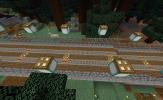
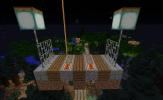
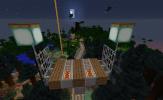
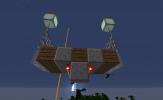
- At Ground Level:
- The track itself is to be placed on andesite (not polished andesite) blocks that are resting directly on the ground. Andesite simulates the gravel used for railroad roadbed.
- The three walkways between and around the tracks are to be made of full wood plank blocks, appropriate to the biome. For example, spruce in cold/snowy biomes, jungle wood in jungles, oak wood in plains, etc.
- Surrounding the track should be one stone brick block placed next to the outer wood planks (notably, ending one block above the surrounding ground), onto which a two-high iron bar fence should be placed. This will prevent almost all players and mobs from getting onto the tracks.
- The track itself is to be placed on andesite (not polished andesite) blocks that are resting directly on the ground. Andesite simulates the gravel used for railroad roadbed.
- Aboveground & Bridges:
- Aboveground rails differ in three important ways: the materials under the track, the barriers on the side, and supports.
- Polished andesite instead of regular andesite is to be used under rails, acting like a concrete base for the rails.
- On the side of the wooden walkways, panes of grey glass are to be placed, on top of which two-high iron bars form railings.
- Redstone torches to power rails should be placed on the sides of a wooden block placed under the middle walkway.
- Supports should be realistic! A long floating unsupported section of a railroad would fall down in the real world, so make sure you build sufficient supports here.
- Strive to make bridges that look nice, are properly scaled, and resemble a structure that would actually stand up properly in the real world.
-
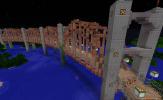
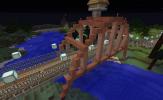
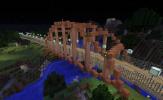
- Aboveground rails differ in three important ways: the materials under the track, the barriers on the side, and supports.
- Belowground:
- tunnels need only be 5 blocks wide, and should have all the usual components (andesite under the tracks, wooden walkways between and beside the tracks).
- Tunnel roofs should be arched, i.e., tunnels should be 2 blocks tall above the outer walkways, and 3 blocks tall above the tracks and middle walkway.
- All tunnel lighting should come from more closely-spaced (eg, every 6-8 blocks) glowstone lamps placed between the rails.
-
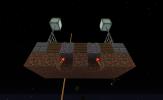
- tunnels need only be 5 blocks wide, and should have all the usual components (andesite under the tracks, wooden walkways between and beside the tracks).
- Underwater:
- Although unrealistic, underwater tunnels that are in the water, rather than below the seabed, are allowed. Their lengths should be minimized.
- Since underwater tunnels are already unrealistic, we allow glass underwater tunnels, so that passengers can look out at the underwater vista.
- Underwater tunnels should follow the design shown below.
-
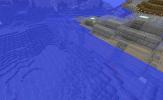
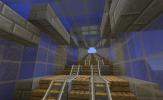
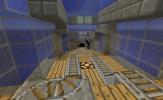
- Although unrealistic, underwater tunnels that are in the water, rather than below the seabed, are allowed. Their lengths should be minimized.
Stations
- Stations on the server-wide rail should be placed as outlined at the beginning of these guidelines: where everyone can use them, and not made private to a single player or town.
- Stations should follow the general design shown below, and visible for closer inspection throughout the server.
-
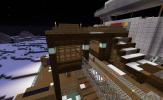
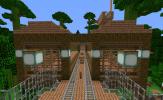
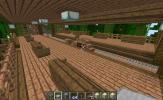
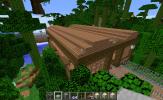
- Exceptions:
Grade Crossings
- It should be possible for players to cross tracks where a road or pathway intersects the railroad. Grade crossings should be clearly marked.
-
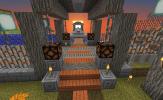
What Not To Do
- Don't cut a straight line through the landscape. Real railroads don't go in perfectly straight lines.
- Especially don't cut a straight line through mountains and hills; go around them!
- Don't build unnecessary bridges and right-of-ways over water.
- Don't be selfish: build railroads that others will be able to use and enjoy.
-
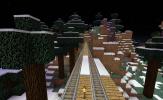
Feel free to post below if you have any questions, and happy building!



